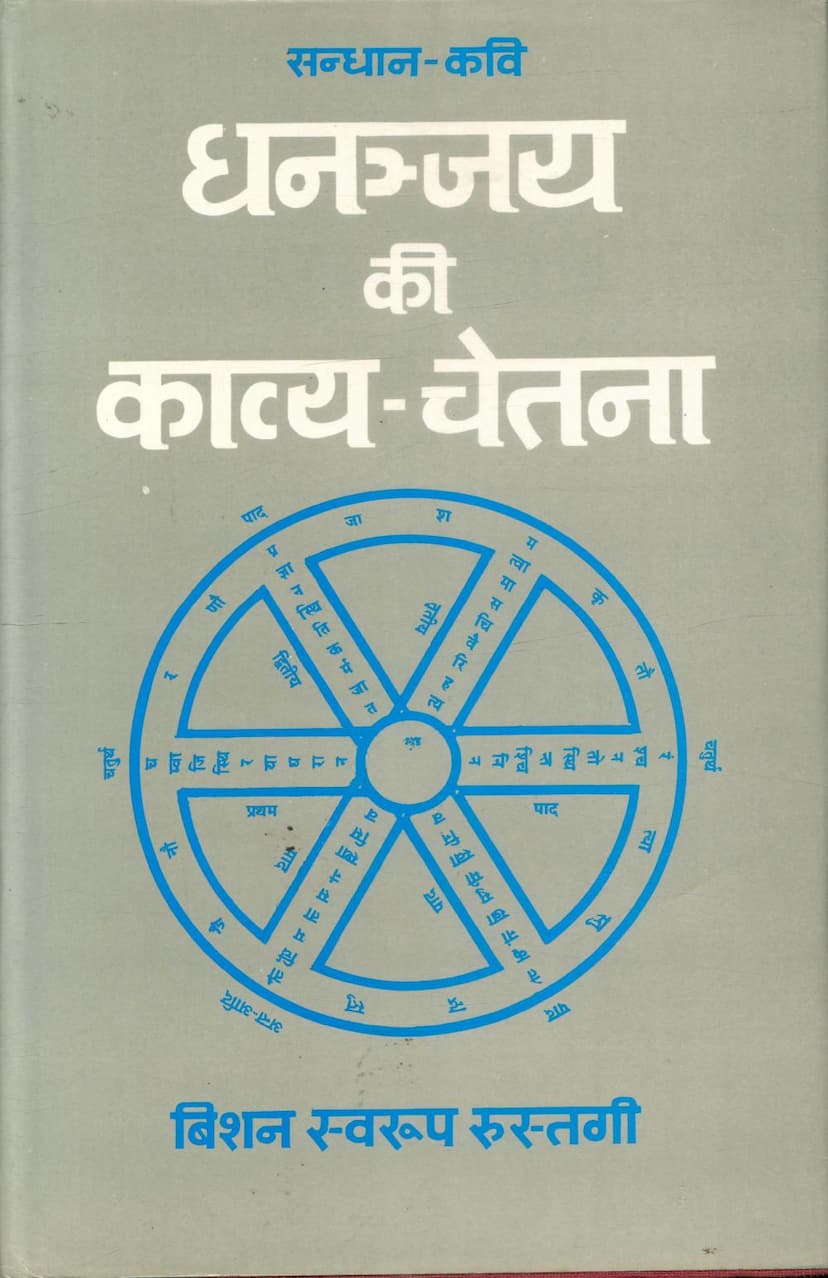Dhananjay Ki Kavya Chetna
Added to library: September 1, 2025

Summary
This book, "Dhananjay Ki Kavya Chetna" by Bishanswarup Rustagi, is a comprehensive study of the poet Dhananjay and his significant contribution to Jain Sanskrit Mahakavya tradition. Dhananjay is renowned for pioneering the "Sandhana-Mahakavya" (conjunction epic) genre with his magnum opus, the "Dvisandhana-Mahakavya," also known as "Raghavapandaviya."
The core of Dhananjay's innovation lies in his ability to intertwine two distinct epic narratives – the Ramayana and the Mahabharata – within a single work, using various figures of speech like shlesha (pun) and yamaka (alliteration) to achieve this synthesis. This literary feat initiated a new sub-genre of Sandhana-Mahakavyas in Jain literature, which later evolved into works with tri-, chatur-, pancha-, sapta-, and even chaturvimsati-sandhanas.
Rustagi's book meticulously analyzes Dhananjay's poetic consciousness by delving into various aspects of his work and its historical context. The book is structured into eight chapters:
- Historical Perspective of Sandhana-Mahakavyas: This chapter examines the historical evolution and poetic traditions of Sandhana-Mahakavyas.
- Mahakavi Dhananjay: Personality and Works: This section provides detailed information about Dhananjay's time period, his personal life, and his literary contributions, including the Dvisandhana-Mahakavya.
- The Conjunctionality of Dvisandhana-Mahakavya: This chapter explores the thematic and narrative structure of the Dvisandhana-Mahakavya within the context of the Sandhana-kavya tradition.
- Dvisandhana as a Mahakavya: This chapter analyzes the epic qualities of the Dvisandhana-Mahakavya, evaluating its adherence to classical Sanskrit Mahakavya conventions in terms of structure, plot, characterization, and other aesthetic elements.
- Treatment of Rasa (Aesthetic Experience): This chapter focuses on the emotional landscape of the poem, analyzing the depiction and interplay of various rasas like Shringara (romance), Veera (heroism), Karuna (pathos), etc.
- Arrangement of Alankaras (Figures of Speech): This chapter highlights Dhananjay's mastery in employing various figures of speech, particularly shabdalankaras (sound-based figures of speech), arthalankaras (meaning-based figures of speech), and chitra-alankaras (pictorial figures of speech), which are crucial to the Sandhana style.
- Chhanda-Yojana (Metrical System): This chapter examines the metrical patterns used by Dhananjay and their impact on the rhythm and emotional expression of the epic.
- Cultural Analysis of Dvisandhana-Mahakavya: This chapter offers a socio-cultural study of the period, analyzing the political conditions, economic status, social environment, and prevailing cultural values reflected in the epic.
Rustagi's work is an extended and revised version of his doctoral dissertation submitted to Delhi University in 1989. It aims to illuminate the literary and cultural consciousness of the era through the lens of Dhananjay's Dvisandhana-Mahakavya. The book also includes a comprehensive bibliography and an index of terms. The author expresses gratitude to various scholars and institutions for their support and contributions to this research.